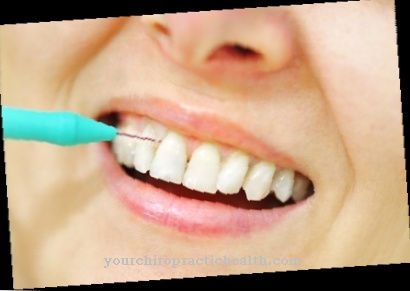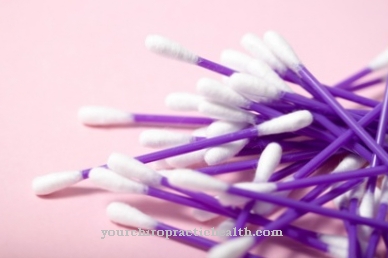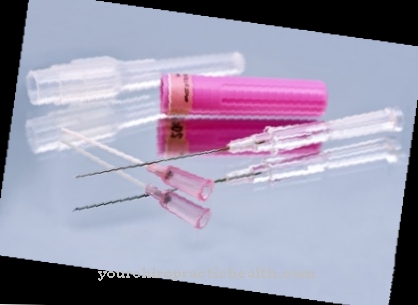Under one Medicine cabinet a collection of medicines and bandages in private households is understood. In the event of illness or emergency, the owner can fall back on the medicinal substances.
What is a medicine cabinet?

The medicine cabinet is one of the most important possessions of a household. Four out of five German citizens have a place where they keep important pharmaceuticals or bandages. With the right combination of medication and medical accessories, help can be provided quickly in the event of illness.
Not every illness or injury requires the help of a doctor. So you can treat numerous ailments yourself. These primarily include colds associated with runny nose and coughs, headaches, back pain, or minor injuries such as bruises, grazes and cuts. It is important to have the right equipment in the medicine cabinet.
Shapes, types & types
A medicine cabinet is understood to be a private container, a place or simply the possession of medicines. A medicine cabinet is typically used to store medication that is used to treat minor ailments that occur frequently.
Anyone who has children has to differentiate between a medicine cabinet for children and adults. For example, children usually need different medication than adults. Therefore, a children's medicine cabinet should definitely contain bandages such as gauze bandages, adhesive plasters, compresses, gels for wounds and burns, and pain relievers, as injuries often affect adolescents. A clinical thermometer, fever-lowering agents, disinfectants, medicines for colds and sore throats, as well as ointments against bruises and insect bites are part of the basic equipment.
Most medicine cabinets, however, are used by adults. The content of the drug box varies from person to person. So people suffer from a wide variety of diseases. As a rule, medicines that the doctor has prescribed are also kept in the medicine cabinet.
A variant is the homeopathic medicine cabinet. This is also where homeopathic medicines are stored. As a rule, a trained homeopath is required to select suitable medicines. Complex preparations that can be used against colds, for example, are also suitable for household use. Typical homeopathics for a medicine cabinet include: a. Aconitum and Belladonna against colds, Arsenicum album against gastrointestinal diseases or Arnica against injuries.
There is also a medicine cabinet for animals. However, those who have pets such as dogs or cats should strictly separate their drugs from human drugs due to the risk of confusion.
Structure & functionality
A medicine cabinet is usually a small medicine cabinet. The most important medicines in case of illness or injury are kept in this cabinet. In an emergency, the respective drug can then be removed and administered.
In order for the medicine cabinet to fulfill its intended purpose, it must be checked regularly. For example, preparations that have expired must be sorted out and disposed of immediately. The same applies to most remedies that have been in use for more than six months. For example, bacteria can settle in nasal sprays or eye drops, which then lead to illness again when they are used.
If you have smaller children, you have to keep your medicine cabinet out of their reach, because toddlers often mistake colored pills for sweets and can thus be in considerable danger.
The correct storage location also plays an important role in the functionality of the medicine cabinet. A cool, dry and dark room is recommended. The bathroom is not advised because there is too much moisture there. The bedroom, a storage room or the hallway are considered to be sensible storage locations.
Medical & health benefits
The health benefits of a medicine cabinet are very high. In this way, she can provide valuable help in an emergency. However, it must have the right equipment. In addition to preparations prescribed by the doctor, this also includes medicines such as pain relievers, cough syrup or cough drops, medicines for colds, antispasmodic preparations for abdominal pain or period pain, as well as medicines for diarrhea, nausea and vomiting. Also useful are ointments to accelerate wound healing, gels against insect bites such as mosquito bites or wasp stings, preparations against sunburn and itching, medicines for sore throats, preparations for the treatment of muscle tension and strains, disinfectants and laxatives.
Aside from the medicines, medical accessories also belong in a medicine cabinet. These are primarily bandages such as gauze bandages, adhesive plasters, adhesive plasters, safety pins, fixation bandages, sterile compresses and a triangular cloth. A clinical thermometer is also essential. Other important pieces of equipment are scissors, tweezers to remove splinters, tick tongs, disposable gloves and a cooling compress or a cooling pad. The latter utensils should, however, be stored in the refrigerator.
The health insurance companies recommend that you keep a slip of paper in your medicine cabinet with important medical telephone numbers and addresses on it. This primarily includes the numbers of the family doctor, an emergency doctor and the poison control center.
The medicines in the medicine cabinet should always be kept in the original packaging. The instruction leaflet must also be kept in order to be able to check important information.

















.jpg)



.jpg)

.jpg)




